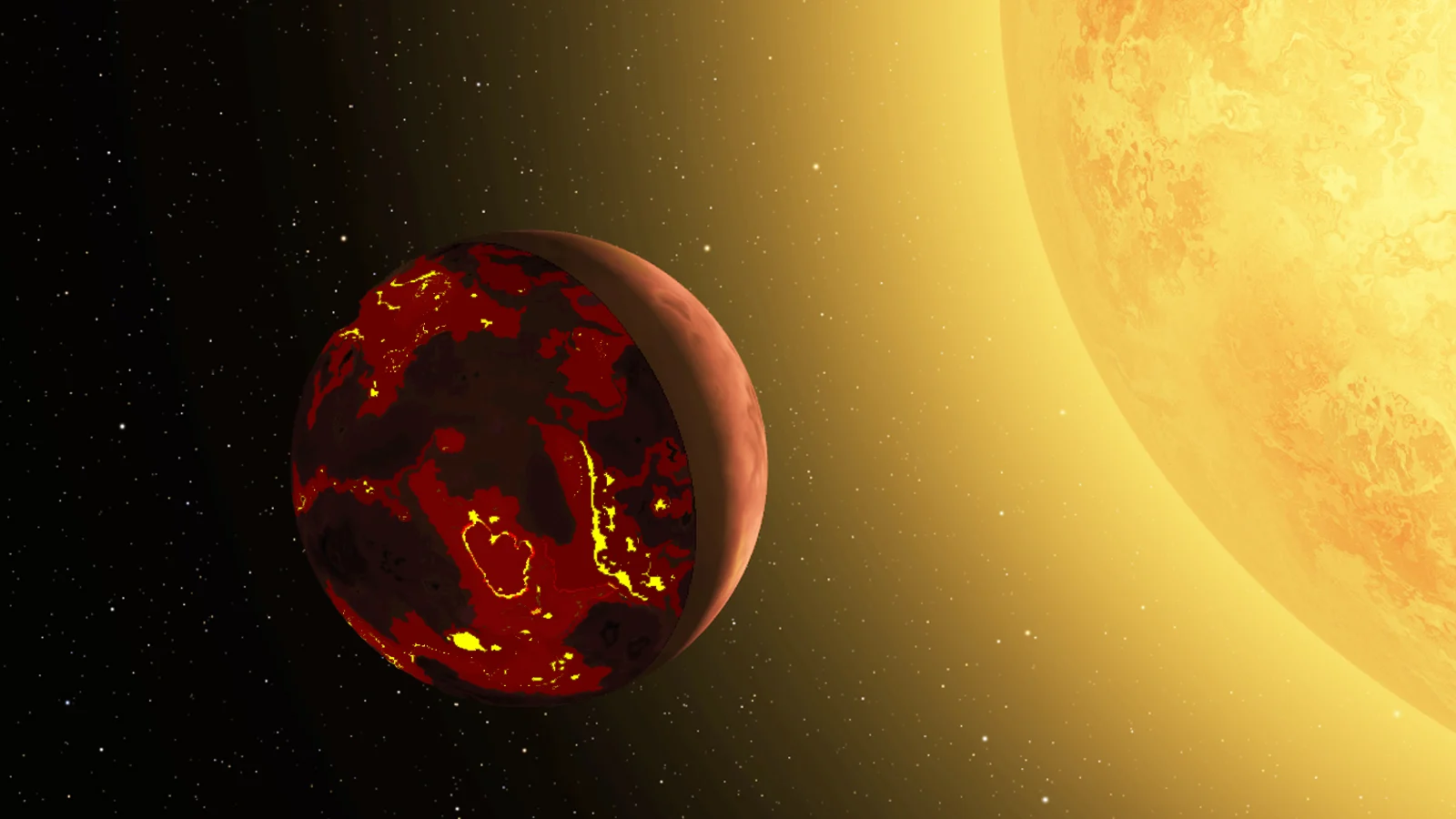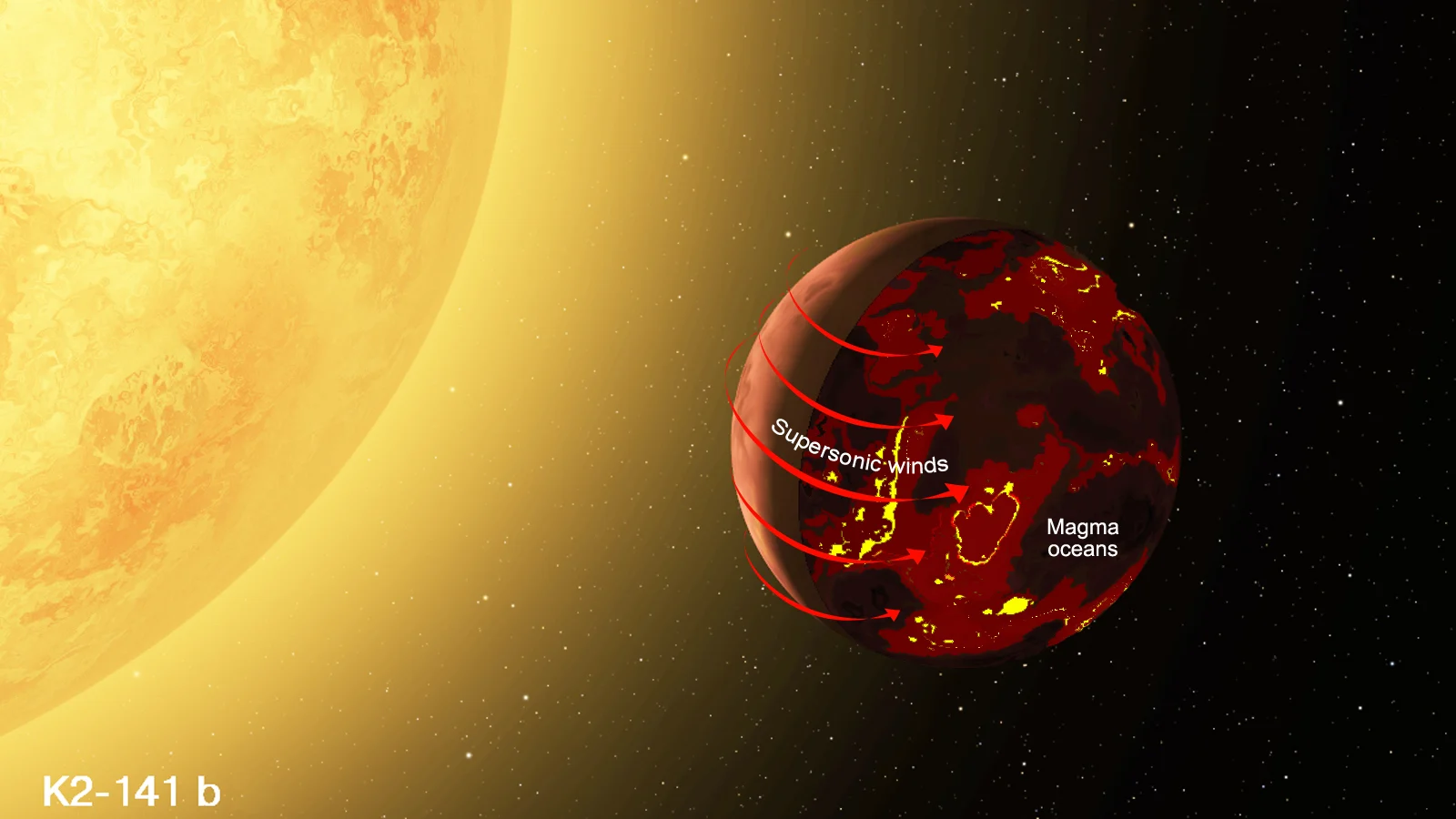
Lava planet weather forecast: Supersonic winds and raining molten rock
Canadian-led research produces the first weather forecast for a hellish lava world.
On a distant alien planet, the weather forecast calls for supersonic winds and rain made of molten rock.
Forecasting weather for Earth is not an easy job. This planet is capable of producing some very severe and dangerous weather conditions. Imagine, instead, forecasting for an alien world that's not only hundreds of light years away from us but has conditions that completely redefine the term 'extreme weather'.
That was the goal of a new study from a team of Canadian and Indian scientists, who modelled the conditions on exoplanet K2-141b.
"The study is the first to make predictions about weather conditions on K2-141b that can be detected from hundreds of light years away with next-generation telescopes such as the James Webb Space Telescope," Tue Giang Nguyen, the lead author of the study from York University, said in a McGill University press release.
This scorching hot planet, located over 200 light years away, is only around 138,000 kilometres from its star's surface. That's just over one-third of the distance between Earth and the Moon, and one 'year' on this world - the time it takes to complete one orbit - is only 6 Earth-hours!

K2-141b is one of the most extreme planets discovered by NASA's Kepler mission. Credits: NASA/ESA/SOHO/Scott Sutherland
This extreme proximity means that K2-141b is tidally-locked, with one side of the planet always faces the star. Having the immense face of a star that close, though, puts roughly two-thirds of the planet's surface under perpetual daylight. These conditions result in K2-141b being a planet of severe extremes. Temperatures in the daylight can exceed 3,000°C — hot enough to vapourize rock. In the darkness of true night, it would get down to a frigid -200°C.
SUPERSONIC WINDS, ROCKY RAIN
According to the study, there is likely no permanent, planet-wide atmosphere on K2-141b. Still, the temperature contrasts on the planet would drive bizarre weather patterns in the thin, patchy atmosphere that does form. Rock vapour rising from magma pools on the day side would be transported around to the night side by supersonic winds, blasting at up to 5,000 km/h.

This artist impression of K2-141b reveals the weather forecast summary from this new study. Credit: NASA/Scott Sutherland
Once this vapour plunged into the darkness of the night side, it would immediately cool and condense, forming rain. Not rain made of water, though. Instead, it would rain molten rock into oceans of magma.
According to study co-author Nicolas Cowan, a professor at McGill University who studies exoplanet atmospheres, there is a benefit to the limited extent of K2-141b's atmosphere.
"Our finding likely means that the atmosphere extends a little beyond the shore of the magma ocean, making it easier to spot with space telescopes," Cowan explained.
RELATED: 'SUPERHABITABLE' ALIEN PLANETS COULD HAVE MORE LIFE THAN EARTH
FORECAST VERIFICATION?
Every good weather forecaster verifies their forecasts. This applies to exoplanet weather forecasters, too.
Unfortunately, confirming this extreme weather is going to take some time. The simple reason for this is because the space telescope that can see K2-141b's atmosphere hasn't been launched yet.
NASA's Kepler Space Telescope found the planet, and its existence was confirmed by the La Silla Observatory in Chile. However, Giang Nguyen, Cowan, and their co-authors — Agnibha Banerjee of the Indian Institute of Science Education and Research, and John Moores from York University — will need something 'next-generation' for this. Only the James Webb Space Telescope, scheduled to launch in October of 2021, will be powerful enough to spot the atmospheric conditions on this lava planet, and allow the researchers to verify their forecast.






